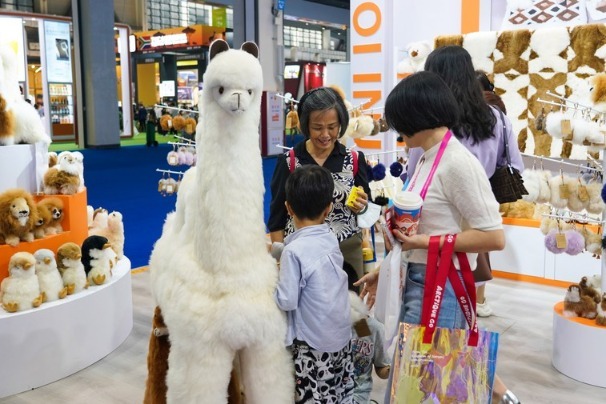Innovation crucial to success of city's plan


Dedicated to supporting Beijing's goal of becoming an international center for scientific and technological innovation, officials at Zhongguancun Science City in Haidian district have vowed to prioritize the promotion of innovation during the 14th Five-Year Plan period (2021-25).
More than 11 percent of Zhongguancun Science City's GDP will be spent on research and development annually, said Lin Jianhua, deputy head of the Haidian district government.
By 2025, a number of cutting-edge scientific and technological achievements and breakthroughs in core areas are expected to have been accomplished, accompanied by notable improvements in economic performance and industrial competitiveness all together.
Its total economic output value is projected to exceed 1.3 trillion yuan ($203.6 billion) at the end of the five-year period, with national-level high-tech enterprises reaching 12,000 in Zhongguancun Science City alone, Lin said.
The added value of core industries in the digital economy are expected to maintain an 8 percent annual growth rate. That means the basic accomplishment of a characteristic modern industrial layout and the realization of balanced development between the northern and southern parts of the area, according to the city government.
Zhongguancun, often referred to as China's Silicon Valley, is home to a large number of innovative technology companies and laboratories.
During the 14th Five-Year Plan period, the administration in Zhongguancun will launch a series of measures to help its national-level laboratories thrive, including the Beijing Academy of Artificial Intelligence, the China Academy of Information and Communications and some other high-level platforms such as a large-scale AI model training platform and a blockchain computing platform.
There are a number of research and innovation centers already built under the umbrella of the coordinated development of the Beijing-Tianjin-Hebei region strategy. During the five-year period, those centers will receive new opportunities for development.
"We will focus on advantageous fields such as AI, blockchain, integrated circuit design and software, seize the chance to develop 5G technology, robotics, industrial internet and step up the layout of future industries such as aerospace and quantum information," Lin said.
"Moreover, we will implement a three-year action plan to propel the digital economy and build up a global digital economy benchmark area."
Part of the "two zones"-the Integrated National Demonstration Zone for Opening up the Service Sector and the China (Beijing) Pilot Free Trade Zone, Future Science City in Changping district is another hub of innovation in the capital.
During the 13th Five-Year Plan period (2016-20), the area which the science city covers was expanded to 170.6 square kilometers.
Future Science City has cultivated a number of national laboratories mainly engaged in the R&D of protein science, life sciences and brain science. Gathering a group of high-level talent, the area has become a magnet for the healthcare industry.
Life Valley in the area has ushered in a series of innovative achievements such as anti-tumor innovative drugs and artificial biological heart valves.
State-owned enterprises have settled in the area's Energy Valley and have undertaken projects to develop a group of bottleneck technologies. The valley's achievements include the development of ultrahigh voltage direct current transmission technology and 3,300-volt insulated gate bipolar transistor chips and modules.
Innovation has driven the development and growth of the high-tech industry and has effectively elevated the GDP of Changping. The district's GDP exceeded 100 billion yuan in 2021, and the general public budget revenue has hit 10 billion yuan, said Yang Renquan, deputy head of the district.
Another major force behind building Beijing into an international scientific and technological innovation center, Huairou Science City, in Huairou district, is striving to become a world-class innovation hub in accordance with the city's plan for the 14th Five-Year Plan period.
A cluster of scientific and technological facilities and platforms has taken shape in the area. Of these, 29 scientific and technological platforms are planned, nine have completed construction of buildings and infrastructure, and seven are already conducting scientific research.
Among the 20 platforms under construction, nine will be completed by the end of 2021, and 11 are planned to be completed in the first half of 2022. The total number of the scientific and technological platforms that will be able to perform scientific research next year will exceed 13, officials said.




